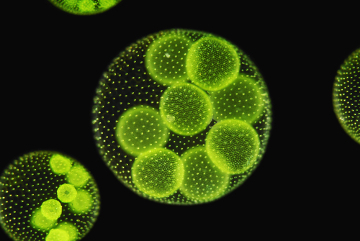At seaweed constitute a heterogeneous group of organisms characterized by the presence of chlorophyll The and for not having a body divided into roots, stems or leaves, due to the absence of true tissues. They can be unicellular or multicellular organisms. In this last group, species of up to 60 meters in length have already been described.
Algae are found in all areas of the planet, being predominantly aquatic, but they can occur in terrestrial environments or in association with other organisms, such as lichens. In aquatic algae, we can observe different forms of life, some being fixed in the substrate and others free in suspension in the water, forming phytoplankton.
All algae are autotrophic, therefore producing their food. Like the plants, this group is characterized by carrying out the process of photosynthesis, in which light energy is used to produce the energy necessary for the survival of the alga.
It is believed that algae are one of the oldest organisms on the planet, being responsible for the production and accumulation of oxygen in the atmosphere. This group is also considered the ancestor of modern plants as it shares some similarities.
The ecological and economic importance of algae is immense, especially its role in the aquatic food chain (producer) and its participation in the release of oxygen. In addition, algae are widely used in oriental cuisine, mainly for the preparation of sushi, and they are also a source of important substances, such as agar, which is widely used in the manufacture of ice cream, sweets and even beverages.
In addition to all its importance, algae can also cause economic and ecological damage. The exaggerated increase in some species causes toxic blooms, which can cause a change in the hue of the water and trigger the death of several species of aquatic animals due to toxins produced by some species. Usually the exaggerated increase in this group of living beings is related to the pollution of aquatic environments, which provides an environment rich in nutrients that facilitate the reproduction of some species.

Some algae are microscopic and form phytoplankton
The vast majority of algae is classified as belonging to the Protoctist kingdom, however, it is noteworthy that some beings prokaryotes (Reino Monera), called cyanobacteria, are often called blue algae. In this text we will consider only the study of protoctist algae.
See below the main protoctist algae and some of their characteristics:
Phylum |
Organization |
Type of chlorophyll |
Chlorophyta (green algae) |
Single or multicellular |
a, b |
Phaeophyta (brown algae) |
Multicellular |
w, w |
Rhodophyta (red algae) |
Single or multicellular |
o, d |
Bacillariophyta (diatoms) |
single cell |
w, w |
Chrysophyta (golden algae) |
Single or multicellular |
w, w |
Euglenophyta (euglenoids) |
single cell |
a, b |
Dinophyta (Dinoflagellates) |
single cell |
w, w |
Charophyta (Carophyceous) |
Multicellular |
a, b |
Curiosity: The science that studies algae is called phycology.
By Ma. Vanessa dos Santos

